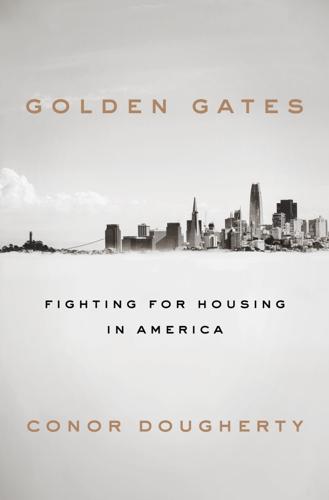
Golden Gates: Fighting for Housing in America
by
Conor Dougherty
Published 18 Feb 2020
High Rent, Price Anxiety, and NIMBYism” (Hankinson), 126 Wicks, Buffy, 218–19, 225, 226 Wiener, Scott, 117–32, 134–43, 185, 186, 187, 203, 208, 211, 221, 225 SB 35 bill of, 135–40, 164 SB 50 bill of, 228–29 SB 827 bill of, 188–90, 192, 193–95, 218–19 senate campaign of, 123–25, 129–31 work ethic of, 137 Woo, Vincent, 131 Wooten, Wilma J., 154–55 work commutes, xii, xiii, xiv World War II, xiii, 40, 63, 65, 68, 145 Yahoo, 24 Y Combinator, 178–79 Yelp, 25–26, 29, 173 Yglesias, Matthew, 24 YIMBY (“yes in my backyard”), 27, 35, 38, 111, 127, 130, 131, 133, 136–38, 141–43, 186, 187, 190, 198, 200, 209–12, 214, 218–25, 228–31, 235 California YIMBY, 188, 195, 211, 218, 220 defining, 210 Proposition C and, 210–11, 224 Proposition 10 and, 210–12, 215–16, 224 SB 827 bill and, 188–90, 192, 193–95, 218–19 YIMBY Action, 130, 138, 140, 209–11, 216, 219, 220 YIMBY Congress, 126–28, 141 YIMBY Gala, 143, 209 YIMBY Market Urbanists, 212, 215 YIMBY PAC, 130 YIMBY Socialists, 212, 215 YIMBYtown conference in Boston, 227–30, 234–35 YIMBYtown conference in Boulder, 35–38, 106, 210, 225 YIMBYtown conference in Oakland, 210 Yom Kippur War, 84 Zeta Communities, 160, 162 zoning and land-use rules, 8–9, 19, 21, 23, 24, 30–31, 85, 108, 109, 134, 136, 149, 157, 167, 235 exclusionary, 9, 23, 31, 86, 108, 193 gentrification and, 193 permits, 120–21, 158 SB 50 bill and, 228–29 SB 827 bill and, 188–90, 192, 193–95, 218–19 ABCDEFGHIJKLMNOPQRSTUVWXYZ ABOUT THE AUTHOR Conor Dougherty is an economics reporter at The New York Times.
…
Ever since, she had been trying to move the YIMBY mantra further left. The main group she belonged to, East Bay for Everyone, an Oakland‐based YIMBY offshoot, endorsed Prop 10 and had made expanding rent control an explicit part of its platform. Victoria had been there at the original Boulder YIMBYtown trying to get people to talk about what role rent regulation could play in a national YIMBY platform. A year later she hosted a leftist roundtable at the second YIMBYtown in Oakland. Where YIMBY Action stood on Prop 10 meant a lot to her, and now there were a lot more Victorias: YIMBY Action had a whole sub‐group called YIMBY Socialists made of people who were focused on affordable and public housing.
…
Two days later, the San Francisco Chronicle ran a big Election Day curtain-raiser that had photos of Laura in the YIMBY offices and carried the headline “Housing, by Any Means Necessary.” “This week, the YIMBYs’ pro‐housing revolution is facing perhaps its biggest test,” the story said. “Its agenda is all over the Nov. 6 ballot. YIMBY‐bred candidates are running for office in San Diego, Mountain View, Palo Alto, Oakland and other cities. YIMBY‐supported measures will be voted on in dozens of cities across the state.” There was no YIMBY without controversy, so the Chronicle article also laid out a catalog of YIMBY fights, quoted Sonja calling neighborhood character “a cancer,” and accused Brian Hanlon of showing up at a neighborhood meeting and telling a resident, “We can’t wait for you to die and rip those pretty Victorians down” (which Brian denied having said).
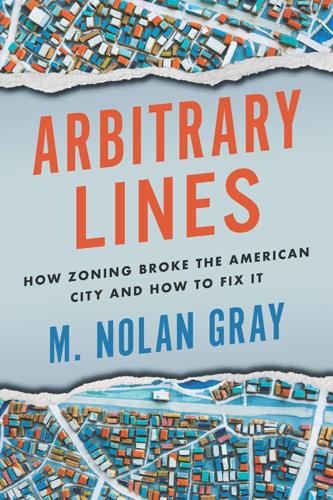
Arbitrary Lines: How Zoning Broke the American City and How to Fix It
by
M. Nolan Gray
Published 20 Jun 2022
Manufactured in the United States of America 10 9 8 7 6 5 4 3 2 1 Keywords: accessory dwelling unit (ADU); affordable housing; automobile dependency; commercial use; deed restriction; density; Houston, Texas; industrial use; land use regulation; minimum lot size; parking requirement; residential use; segregation; sprawl; sustainability; Yes In My Backyard (YIMBY) ISBN-13: 978-1-64283-255-6 (electronic) For Mom and Dad— who moved to a city and made it all possible. Contents Introduction Part I Chapter 1. Where Zoning Comes From Land Use before Zoning What Changed? 1916 The Federal Push Chapter 2. How Zoning Works How Zoning Is Born Decoding the City Everything in Its Right Place Don’t Be Dense How Zoning Changes Patching Up Zoning?
…
As interest in land-use regulation rekindled among urban economists in the early 2000s, researchers began to find increasingly clear evidence of a link between high housing costs and zoning.1 A trickle of blogs and e-books would bring popular attention to the issue.2 In 2014, ideas turned into activism, with the nation’s first YIMBY (Yes In My Backyard) groups emerging seemingly out of nowhere in the Bay Area, on a mission to fight for housing and rein in zoning. In short order, the movement spread nationwide, with dozens of groups fighting for zoning liberalization at the state and local levels across the country as of 2022. By decade’s end, both the Obama and Trump administrations had vowed to take on zoning reform.3 Editorials decrying the evils of zoning now find their way into the opinion sections of national newspapers on a weekly basis.
…
And one of the most powerful tools we have for combating climate change—building more walkable, energy-efficient, compact cities—is blocked off by zoning codes adopted nearly a century ago. The good news is that the tide is turning, as a steady trickle of zoning critiques have turned into a tidal wave of interest in reforming zoning. Thanks to an ideologically diverse coalition of pro-housing YIMBY (Yes In My Backyard) activists, pro-growth developers, antisegregation progressives, and environmentally minded urbanists, zoning reform has unexpectedly emerged as a cause célèbre. Across the country, a diverse array of cities and towns are gradually chipping away at the mainstays of zoning. Indeed, the most indefensible zoning policies, like single-family zoning and minimum parking requirements, are under fire like never before, and rightly so.
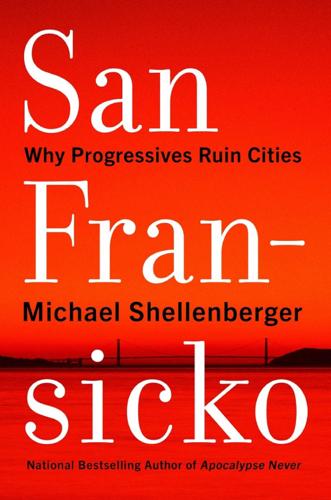
San Fransicko: Why Progressives Ruin Cities
by
Michael Shellenberger
Published 11 Oct 2021
They point to cases of badly done redevelopment, such as the bulldozing of San Francisco’s historically African American neighborhood, the Fillmore, as proof. Over the last decade, demand for new housing in San Francisco and around the country has come from urban Millennial professionals who have formed a yes-in-my-backyard (YIMBY) movement to counter NIMBYs. In early 2018, state senator Scott Wiener from San Francisco introduced YIMBY-backed legislation that would have radically increased the number of apartments, condos, and duplexes near train and bus stations across California. The year before, the California legislature had passed Wiener’s legislation to streamline residential housing approvals.
…
And two-thirds of likely voters are homeowners, while just one-third are renters.67 “It’s the worst possible opponent because it’s Big Voter,” said the pro-housing advocate, laughing. “Big Voter doesn’t want you to succeed.”68 Big Voter appears to be the biggest obstacle YIMBYs face in San Francisco. In November 2020, SF Weekly reported that San Francisco’s progressive Board of Supervisors blocked a nominee to the city’s transportation board simply because the person was a member of SF YIMBY. Wrote the Weekly, “YIMBY has become politically toxic among progressives.”69 Even so, YIMBYs keep pursuing the right message for progressives. They promote more housing for greater livability and walkability. They emphasize solving climate change by reducing driving.
…
Michael Hiltzik, “Column: California’s Housing Crisis Reaches from the Homeless to the Middle Class—but It’s Still Almost Impossible to Fix,” Los Angeles Times, March 29, 2018, www.latimes.com. 61. Laura Foote, interview by the author, January 15, 2021. 62. YIMBY leader (name withheld), interview by the author, April 1, 2020. 63. Ibid. 64. Laura Foote, interview by the author, January 15, 2021. 65. YIMBY leader (name withheld), interview by the author, April 1, 2020. 66. Ibid. 67. “California’s Likely Voters,” Public Policy Institute of California, accessed January 21, 2021, www.ppic.org. 68. YIMBY leader (name withheld), interview by the author, April 1, 2020. 69. Benjamin Schneider, “Unpacking SF’s Moderate/Progressive Divide,” SF Weekly, November 11, 2020, updated November 13, 2020, www.sfweekly.com. 70.
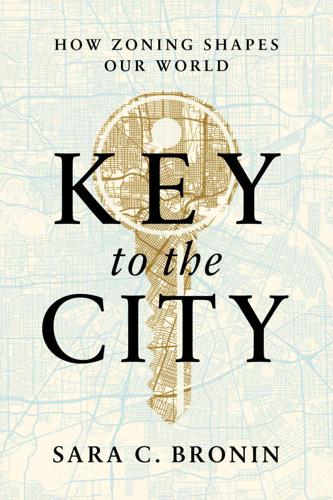
Key to the City: How Zoning Shapes Our World
by
Sara C. Bronin
Published 30 Sep 2024
Given this split, the politics that took shape around these issues deserves mention. As in many zoning battles, a clear division separated the “not-in-my-backyard” (NIMBY) opponents of change from the pro-housing, “yes-in-my-backyard” (YIMBY) proponents. The NIMBY-YIMBY debate is a national one, but it plays out in hundreds of local zoning decisions on specific projects and on proposed amendments to the zoning code. As Flisrand told a U.S. Senate subcommittee in 2023, YIMBY-style change requires three groups: community groups like N4MN, city staff that encourage public participation in zoning policymaking, and elected officials with the courage to enact reforms.
…
See also pedestrians Washington, D.C., 68, 85, 104 downtown, 170 Georgetown neighborhood of 167–71 Pennsylvania Avenue, 168 rezoning in, 169 Washington state Renton, 66 Seattle, 104, 132–33, 170, 202 water use and management flooding, 24, 54, 62–63, 73, 78, 134–35, 168, 170, 189 hurricanes, 71–72, 153, 158 rain gardens, 141–44 rainwater harvesting, 131–33, 141, 202 swimming pools, 15, 16, 87, 130 Waterfront Park, Burlington, 137, 140 Weinberger, Miro, 141 West Palm Beach, FL, 153 West University Place, a city within Houston, 71–73, 76–81, 87, 189, 192 White communities, 3–5, 17, 40–41, 45, 47, 79–81, 92, 136, 153, 193, 195 Whitney, Guilford H., 24, 25 Williams, Lucinda, 54, 56 Wisconsin, 118, 200 Woodlawn neighborhood of Chicago, 39, 41, 184, 185 World War I, 20, 30 World War II, 47, 55, 59, 64, 91–92 Wright, Frank Lloyd, 99 Broadacre City, 126–30 on green roofs, 132–33 Taliesin West, 128–30 Wu, Michelle, 114 Wyoming, 88 “yes-in-my-backyard” (YIMBY), 82–83 Young, Neil, 109 “zone lots,” 146–47, 204 zoning, 1–11, 166–73 for accessory uses, 56, 113, 186 advocates of its abolition, 167 art and culture in the city, 39–52 the architecture of a city, 152–65 as art and science, 28 “build-to” lines, 142 comprehensive planning, 77, 81, 102, 182 defined, 5–6 emergency zoning measures, 27–28 enforcement, 30, 58–59, 67–68, 156, 181 “Euclidean” zoning, 20, 30–31, 181 exclusivity vs. inclusivity, 77–78, 84–87 “floor-to-area ratio,” 83, 105 food production in cities, 109–20 “form-based” zoning codes, 61–62, 140–42, 153, 154, 157, 160, 206 frontage requirements, 26, 138–39, 142–43, 154, 162–63, 190, 206 “gentle density” proposals, 82 housing and, 71–89 “inclusionary,” 85–87, 88, 105, 171, 195 land use, 1, 6–7, 19, 20–25.
…
Senate subcommittee in 2023, YIMBY-style change requires three groups: community groups like N4MN, city staff that encourage public participation in zoning policymaking, and elected officials with the courage to enact reforms. Minneapolis had all three, adopting reforms that reflected the collective desires of a more diverse coalition of constituents. The phrase “eliminate single-family zoning” gained traction in Minneapolis and has become a rallying cry for YIMBY zoning reformers nationally. Yet early returns on the actual production of diverse housing in the city have so far fallen short of expectations: a mere seventy-six units in two- to four-unit buildings were permitted in 2021. The truth is that it was not enough for Minneapolis simply to legalize these new uses. Zoning provisions still continued on the one hand to cap the square footage of these buildings through what is called a “floor-to-area ratio,” and to require a minimum floor area of 500 square feet for most housing units.
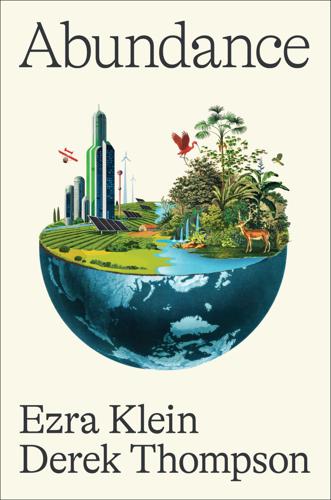
Abundance
by
Ezra Klein
and
Derek Thompson
Published 18 Mar 2025
.; US Census Bureau, Building Permits Survey, https://www.census.gov/construction/bps/current.html. See also M. Nolan Gray, “A Bold Case Against Zoning,” Fast Company, July 11, 2022, https://www.fastcompany.com/90766731/a-bold-case-against-zoning. 12. California YIMBY, Ned Resnikoff, director, “Housing Abundance as a Condition for Ending Homelessness: Lessons from Houston, Texas,” California YIMBY Education Fund, n.d., https://cayimby.org/wp-content/uploads/2023/10/Housing-Abundance-as-a-Condition-for-Ending-Homelessness-FINAL.pdf. 13. Roy Kent, “Is Buying a Home Easier or Harder in Houston? Here’s How It Compares to Other Texas Metros,” Rice University Kinder Institute for Urban Research, December 13, 2023, https://kinder.rice.edu/urbanedge/home-buying-Houston-Texas-affordability; Maurice Backman, “Houston Housing Market Forecast,” U.S.
…
Elon Musk has led some of the most innovative companies of the modern era, but according to the earliest reports of his role in Trump’s government, he is focused on slashing what government does rather than reimagining what it can do. The right is abandoning many of its successes to embrace a politics of scarcity. That has left room for liberals to embrace what Republicans have abandoned: a politics of abundance. In fact, there are signs that they already are. We see it in the rise of the Yes In My Back Yard (or YIMBY) movement, a motley collection of housing obsessives who went from haranguing officials at public hearings in San Francisco to wielding influence nationally. Democratic governors across the nation have passed bill after bill trying to make it easier to build homes. In the 2024 election, one of Kamala Harris’s first policy proposals was to build 3 million new homes:21 a supply-side policy that reflected a decade of persuasion and organizing by liberals who’d come to see the suffering that housing scarcity was causing in their cities.
…
H., 161–63 Fully Automated Luxury Communism (Bastani), 13–14 “Futurama II” exhibit (General Motors), 218 Galbraith, John Kenneth, 49 Gallup survey (1965), 200 Galperin, Ron, 109 Ganong, Peter, 32 Garcetti, Eric, 108 General Motors, 218 genetics CRISPR, 158–59 Genome Biology journal, satirical article, 148 Mendel and, 144 mRNA research, 130–32, 135, 137–40, 146, 156, 161, 184 Georgia, construction productivity in, 80 geothermal energy, 65 Germany carbon emissions per person, 66 housing supply in, 23 post–World War II economy, West Germany, 81 rail system cost of, 77 solar technology of, 179, 181 Gerrard, Michael, 113 Gerstle, Gary, 203–4, 207, 220–21 Gertner, Jon, 164–65 “Getting Infrastructure Built: The Law and Economics of Permitting” (Liscow), 97–98 Gilliam, Harold, 56 Glaeser, Ed, 24, 25, 27, 30, 84–85 GLP-1 drugs, 157–58 Golden Fleece Award, 153 Goldman Sachs, 27 Google, 28, 142 Goolsbee, Austan, 78–80 government and public opinion, 14–15, 89–94, 182–83; see also political issues Grant, Ulysses S., 21 grant writing, see invention Great Depression, see New Deal The Great Gatsby (Fitzgerald), 217 Great Recession American Recovery and Reinvestment Act (2009), 72–74 housing market and, 23 political order concept and, 206 Greeley, Horace, 21, 22–23 green infrastructure, 94–99, 109–10; see also energy “The Greens’ Dilemma” (Ruhl and Salzman), 69–70, 95–97 Griffith, Saul, 68 growth, see housing Hansen, Alvin, 22 Harris, Kamala, 18, 61, 93, 212, 213 Harris & Associates, 118 Harvard University, 156–57, 163 Hawaii, homelessness in, 40 Hayes, Denis, 51 H-1B visa, 146; see also immigration policy health care; see also COVID pandemic abundance potential for, 1–4 Affordable Care Act (2010), 7 big government–small government divide on, 105–6 NIH funding for research (see National Institutes of Health) penicillin discovery, 169–71, 174–75, 176, 180, 183–85, 202 politics of invention and, 134–36 scarcity of primary-care physicians, 190–91 supply-side economics and insurance cost, 8–9 Heisenberg, Werner, 147 Hewlett-Packard, 163 Hickel, Jason, 58, 60, 61 higher education cost, 9 High-Risk, High-Reward Research program (NIH), 159, 160 High-Speed Rail Authority (California), 74–76, 94, 118 highways; see also transportation Federal-Aid Highway Act (1968, 1973), 51 Federal Highway Administration, 125 Highway Safety Act (1966), 86 Interstate Highway System, 46–47, 50, 51, 54–56, 96, 97, 204 HIV research, 137–39, 148 HNTB, 118 Homelessness Is a Housing Problem (Colburn and Aldern), 39–41 housing, 21–56 abundance potential for, 1–4, 212–13, 215–16 big government–small government divide on, 105–12 building codes and, 42–43 cities and innovation, 25–30 cities as American frontier, 21–25 construction productivity measure, 79 elevators in, 173 environmentalism and effect on, 48–54 financing of, private vs. public, 101–4, 106 homelessness as scarcity problem of, 38–43 immigration policy and, 208 income inequality and, 23–25, 30–32 price rise of 1970s to present, 23, 43–47 social (public) housing availability, 111–12 supply-side economics and price rise of, 8 thirty-year fixed-rate mortgage, 44–45 transportation infrastructure and, 35–38, 48–56 Yes In My Back Yard (or YIMBY), 212 zoning rules and, 33–38, 44–47, 106–7, 208 Housing Accelerator Fund, 102 Houston, housing and zoning in, 106–7 Howard Hughes Medical Institute (HHMI), 167 Howell, William, 17 How Solar Energy Became Cheap (Nemet), 178–80 Huffman, Jim, 36 Human Genome Project, 148, 158 Hygienic Laboratory, 151 IBM, 120–21, 163 I-95 bridge repair (Pennsylvania), 125–28 Idaho, construction productivity in, 80 idea factories, 160–66; see also invention The Idea Factory (Gertner), 164–65 Illinois, presidential election (2024) and, 18 immigration policy border wall and, 98 housing and, 208 immigrants as others, 208 invention and skilled workers, 115, 116, 145–46, 166 Immunity journal, 138 Imperial College London, 133 implementation, see deployment and implementation income inequality energy inequality and, 63–64 housing and, 23–25, 30–32 India, air pollution in, 63–64 individualism, 205–6 inflation housing cost since 1970s, 43–45 supply-side economics and, 9–10 Inflation Reduction Act (2022), 11, 71, 77, 181–82, 211 infrastructure; see also transportation Biden on, 210–11, 213 energy and infrastructure need, 68–71 housing and, 48–56 Trump on, 210 Infrastructure and Investment Jobs Act (2021), 71 Institute for Progress, 145, 187 Intel, 26, 180 Internal Revenue Service (IRS), 122 internet, DARPA and, 161, 162 Interstate Highway System, 46–47, 50, 51, 54–56, 96, 97, 204 invention, 129–68 burden of knowledge and, 143–44 eureka myth and, 171–75, 177, 180, 182, 202 (see also deployment and implementation) idea factories of, 160–66 immigration policy and, 115, 145–46, 166 innovating scientific research for, 166–68 Karikó Problem and pace of scientific progress, 141–49, 156 Karikó’s research and NIH lack of funding, 129–33, 137–41, 146, 155, 168 NIH bureaucracy and effect on, 152–59 NIH incentives for, 159–60 NIH inception and, 149–52 politics of, 133–37 World’s Fair (1964), 217–19 iPhone (Apple), 26, 183 Israel, water desalination by, 67, 198 Italy, housing supply in, 23 Japan carbon emissions per person, 66 high-speed rail system of, 72 housing supply in, 23 post–World War II economy, 81, 82 rail system cost of, 77 Jefferson, Thomas, 62 Jenkins, Jesse, 69 Johnson, Lyndon B., 48, 86, 218–19 Jones, Benjamin, 143, 145 JPMorgan Chase, 27, 29–30 Kagan, Robert, 91–92 Kalil, Thomas, 195 Karikó, Katalin, 129–33, 137–41, 146, 155, 168 Karikó Problem, 141–49, 156 Kelly, Brian, 76, 118 Kelly, Mark, 116 Kennedy, John F., 201 Kennedy, Robert F., Jr., 188 Keynes, John Maynard, 183 Klein, Ezra, 75 Kuttner, Bob, 106, 111 labor productivity measure, 78 labor unions, 82, 126, 127 Labosky, Patricia, 159–60 Laffer, Arthur, 6 Lakewood, California, housing and, 36 land agriculture and energy use, 59–61 land use for sustainable energy, 70 lot size and housing, 45, 47 Latvia, productivity measure, 79 Lawrence Berkeley National Laboratory, 70 Lawrence Livermore National Laboratory, 66–67 Legislative Analyst’s Office (California), 38 Lehrer, Jim, 89 Leonardo da Vinci, 131 Less Is More: How Degrowth Will Save the World (Hickel), 58, 60, 61 liberalism, 101–28 abundance as potential for, 1–4, 16–19, 211–15 (see also abundance) big government–small government divide and, 105–12, 205 “everything-bagel liberalism,” 113–17 litigation and bureaucracy problem, 89–94, 205 (see also bureaucracy) neoliberalism as political order, 204 New Deal and effect on, 49 outsourced work by government agencies, 117–24 private vs. public financing and, 101–4, 106 as procedural vs. outcome-based, 89–94, 112, 125–28 regulatory processes vs. efficient choices of government, 125–28 on social welfare system, 70–71 Licklider, J.
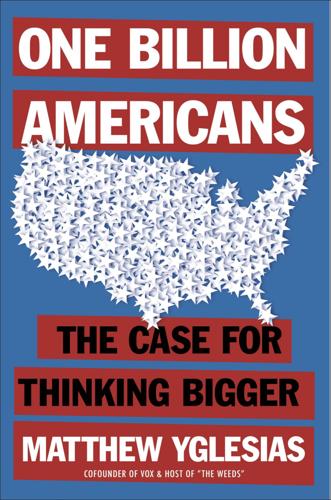
One Billion Americans: The Case for Thinking Bigger
by
Matthew Yglesias
Published 14 Sep 2020
It’s not actually important to find and praise one specific best idea for improving federal housing policy. The essential problem here is political, and the politicians themselves are best equipped to figure out what can pass and sustain enduring coalitions. But most current proposals are flawed in at least one of two ways. One trap, shared by Senator Todd Young’s Yes In My Backyard (YIMBY) Act and Senator Cory Booker’s campaign proposal, is excessive focus on Community Development Block Grants (CDBG) as levers for incentivizing change. These proposals arise out of a narrow congressional logic that says that if you want to tackle a housing issue, you need to identify a Department of Housing and Urban Development funding stream.
…
My old friends Brian Beutler, Kriston Capps, David Montes, Sam Rosenfeld, Daniel Schlozman, and Jeff Theodore counsel me through everything. The guys in the dads group chat keep me sane. Outside of close friends, I want to pay a special homage to Laura Foote, Brian Hanlon, and other leaders of the California YIMBY movement whose work is not only making the world a better place, but who really convinced me that ideas do matter. Speaking of ideas, there is little that is genuinely original in the book and everyone from whom I’ve borrowed on specific points should be recognized in the text or in the footnotes.

Ten Lessons for a Post-Pandemic World
by
Fareed Zakaria
Published 5 Oct 2020
Influential homeowners’ associations block all change they see as infringing on their turf or threatening to attract “the wrong people” to their neighborhood—often code for minorities. Recently, this NIMBYism has provoked a countermovement in California and beyond. These activists instead say YIMBY, Yes In My Backyard, and advocate for zoning reform, better mass transit, and more development to spur vibrant urbanism. Mayor Hidalgo’s plans follow this same vision of diversity, both in amenities and experience, as she strives to integrate all the varied functions of the city. The new proximity of the fifteen-minute city would encourage bicycle rides and reduce car traffic.
…
Cities’ Growth Was Stagnating,” Brookings, April 6, 2020, https://www.brookings.edu/research/even-before-coronavirus-census-shows-u-s-cities-growth-was-stagnating/. 138 headed for . . . other metros:: Joel Kotkin, “What the Census Numbers Tell Us,“ April 5, 2018, http://joelkotkin.com/what-the-census-numbers-tell-us/. 138 fifteen-minute city: Natalie Whittle, “Welcome to the 15-Minute City,” Financial Times, July 17, 2020, https://www.ft.com/content/c1a53744-90d5-4560-9e3f-17ce06aba69a; Jennifer Keesmaat, “The Pandemic Does Not Spell the End for Cities,” Foreign Affairs, May 28, 2020. 138 Samuel Kling: “What Is Paris Mayor Anne Hidalgo’s Plan for a ‘15-Minute City’?,” Chicago Council on Global Affairs, February 24, 2020, https://youtu.be/55VkdnzGzhw. 139 YIMBY: Alana Semeuls, “From ‘Not in My Backyard’ to ‘Yes in My Backyard,’ ” Atlantic, July 5, 2017. 139 resoundingly reelected: “Hidalgo, Mayor since 2014, beat conservative candidate Rachida Dati in France’s municipal elections, winning 50.2% of the ballot compared to Dati’s 32%. Agnes Buzyn trailed in with just 16%”: Carlton Reid, “Anne Hidalgo Reelected as Mayor of Paris Vowing to Remove Cars and Boost Bicycling and Walking,” Forbes, June 28, 2020. 139 remain car-free: Feargus O’Sullivan, “What Happens to Public Space When Everything Moves Outside,” City Lab, May 29, 2020, https://www.bloomberg.com/news/features/2020–06–29/what-happens-to-public-space-when-everything-moves-outside. 140 “United City-States of America”: Parag Khanna, “A New Map for America,” April 15, 2016, citing Joel Kotkin’s “mega-regions.”

EcoVillage at Ithaca Pioneering a Sustainable Culture (2005)
by
Liz Walker
Published 20 May 2005
Another man, who had cancelled a rare date with his wife to attend the meeting, took the stone next. He was definitely in favor of the tank. Not only would it help us to fulfill the whole vision of EcoVillage, but it would also help out the Town of Ithaca. He saw it as an opportunity to show some civic spirit. Rather than taking a Not-in-my-backyard (NIMBY) attitude, he advocated a Yes-in-my-backyard (YIMBY) approach. In his view a water tank was fairly innocuous. Other communities had had to accept sewer treatment plants or coal-fired plants. We would be getting off easy. The stone went around the circle for over an hour. As some people left others came in to speak. The tone was quiet and respectful, and I noticed that everyone was listening intently as people spoke. 100 E C O V I L L A G E AT I T H A C A I was the last speaker.
…
SOUL: Refers to a partnership of six people who raised $120,000 to pay off a loan held by an unhappy lender. “SOUL” stands for “Save Our Unlimited Land.” VA: Refers to the Village Association, the not-for-profit entity that owns the infrastructure at EVI and coordinates village-wide decisions between FROG and SONG. YIMBY: Coined by an EVI resident to refer to an attitude in which people would welcome the presence of a water tank near to where they live. Derived from “Yes in My Backyard.” ECOVILLAGE AT ITHACA TIMELINE 1990 • The Global Walk for a Livable World draws participants from six countries for a nine-month walk from Los Angeles to New York City. • Joan Bokaer develops the vision for an ecovillage to be created in Ithaca, New York. 1991 • Joan Bokaer speaks about the EcoVillage vision in Ithaca, drawing about 100 interested participants. • The Envisioning Retreat at Ithaca takes place in June, jumpstarting the formation of the EcoVillage organization, under the aegis of the Center for Religion, Ethics, and Social Policy (CRESP), a nonprofit associated with Cornell.
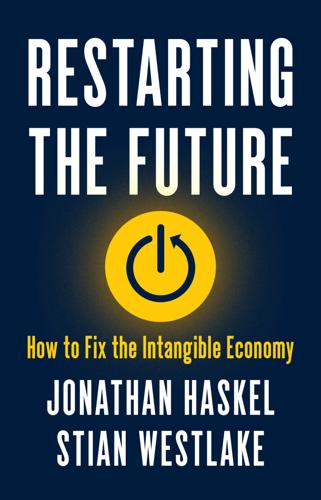
Restarting the Future: How to Fix the Intangible Economy
by
Jonathan Haskel
and
Stian Westlake
Published 4 Apr 2022
Economists would recognise this situation as a coordination failure: many individual owners have a strong incentive to redevelop their plot, but they do not want their neighbours to do so unilaterally, and they cannot coordinate to change the rules to allow them all to do so. As John Myers of London YIMBY (“Yes, In My Back-Yard”) points out,20 political scientists have given considerable thought to this type of problem. Elinor Ostrom studied how communities managed so-called common pool resources, such as fishing grounds and grazing lands. She looked at how bottom-up management of these resources often worked better than top-down control by governments—so long as good institutions and norms existed to allow people to manage the resources.21 Urban space and the shared city environment is a modern-day example of a common pool resource.
…
She looked at how bottom-up management of these resources often worked better than top-down control by governments—so long as good institutions and norms existed to allow people to manage the resources.21 Urban space and the shared city environment is a modern-day example of a common pool resource. This is where two interesting proposals, called street votes and block-wide zoning, come in. Street votes is a proposal being advanced by London YIMBY; block-wide zoning was first suggested by US urban scholar Robert Ellickson in the 1990s.22 These proposals involve radically devolving the approval for planning and zoning decisions to small, local areas. Rather than being made at the level of a city or a local authority, planning decisions would be made by the owners of properties on each street or each city block.
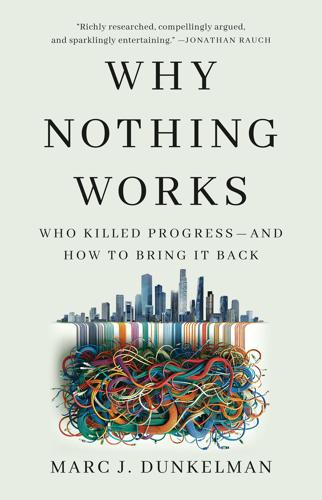
Why Nothing Works: Who Killed Progress--And How to Bring It Back
by
Marc J Dunkelman
Published 17 Feb 2025
This new approach will play differently in distinct contexts.13 In the realm of housing, for example, the shift may take a lighter touch simply because reformers have found a Jeffersonian approach to expanding supply. The YIMBY (Yes In My Back Yard) movement that has emerged to counter the rampant NIMBYism isn’t Hamiltonian at all—it agitates for pushing power down past neighborhood opponents of new development to property owners eager to develop their underutilized lots. YIMBYs, in many instances, would allow otherwise frustrated developers to build multifamily homes near transit stops as of right—that is, no matter whether the neighbors object. No zoning restrictions. No noise standards. No environmental protections. Worries about local “character” notwithstanding. If someone purchases that lot, YIMBY reformers would build housing supply up by pushing power down.
…
A second more recently developed tactic, put on display in California, has aimed to turn NIMBYism against itself—that is, to bring Jeffersonian rather than Hamiltonian tactics to bear on the fight for more housing. Before it sputtered, the Quiet Revolution had been an explicitly Hamiltonian affair, seeking to pull the power to decide where and if housing would be constructed up from the local to the state level. Today, by contrast, so-called YIMBYs are often prone to embrace what amounts to a Jeffersonian approach, freeing the individuals who own given plots to build what they want regardless of local opposition. Their fight is to allow property owners to build granny flats above their garages as of right—that is, even if the neighbors object.
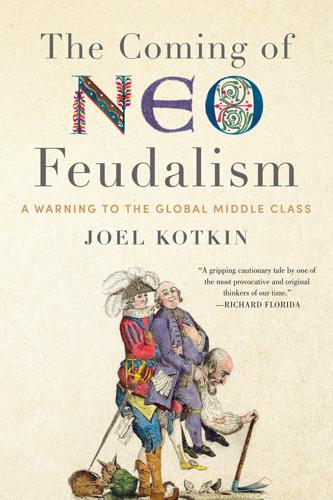
The Coming of Neo-Feudalism: A Warning to the Global Middle Class
by
Joel Kotkin
Published 11 May 2020
CNN, May 6, 2017, https://money.cnn.com/2017/05/26/news/economy/mark-zuckerberg-universal-basic-income/index.html; Chris Weller, “Elon Musk doubles down on universal basic income: ‘It’s going to be necessary,’” Business Insider, February 13, 2017, https://www.businessinsider.com/elon-musk-universal-basic-income-2017-2; Patrick Caughill, “Another Silicon Valley Exec Joins the Ranks of Universal Basic Income Supporters,” Futurism, September 8, 2017, https://futurism.com/another-silicon-valley-exec-joins-the-ranks-of-universal-basic-income-supporters; Sam Altman, “Moving Forward on Basic Income,” Y Combinator, May 31, 2016, https://blog.ycombinator.com/moving-forward-on-basic-income/; Diane Francis, “The Beginning of the End of Work,” American Interest, March 19, 2018, https://www.the-american-interest.com/2018/03/19/beginning-end-work/. 14 “The YIMBY Guide to Bullying and Its Results: SB 827 Goes Down in Committee,” City Watch LA, April 19, 2018, https://www.citywatchla.com/index.php/los-angeles/15298-the-yimby-guide-to-bullying-and-its-results-sb-827-goes-down-in-committee; John Mirisch, “Tech Oligarchs and the California Housing Crisis,” California Political Review, April 15, 2018, http://www.capoliticalreview.com/top-stories/tech-Oligarchs-and-the-california-housing-crisis/; Joel Kotkin, “Giving Common Sense a Chance in California,” City Journal, April 26, 2018, https://www.city-journal.org/html/giving-common-sense-chance-california-15868.html. 15 Thomas Piketty, Capital in the Twenty-First Century, trans.
…
While environmental arguments are most common, some activists claim that single-family neighborhoods are inherently racist because they used to be overwhelmingly white. This notion has been central to the push against single-family zoning in cities such as Seattle and Minneapolis.38 Others dislike the very idea of property ownership and family privacy. Victoria Fierce of the YIMBY pro-density lobby in California favors increasing urban density in part because it “promotes collectivism.”39 Of course, this is reminiscent of the orthodoxy seen in the late, great Soviet Union. In 1957, several architects from the University of Moscow set out to create “a concrete spatial agenda for Marxism,” emphasizing small apartments densely built near public transit, with close proximity to the workplace.
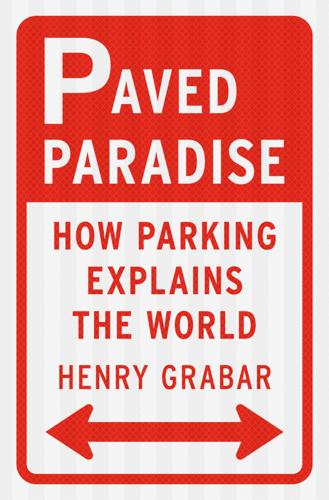
Paved Paradise: How Parking Explains the World
by
Henry Grabar
Published 8 May 2023
They came from the Left, frustrated by a hidden nationwide subsidy for fossil fuels and enraged by the hurdles to building low-income housing, and the Right, thwarted by laws that told you what to do with your property with dubious justification. Preservationists who wished to see old buildings find second life and antipreservationists who wanted to see new buildings everywhere. Free marketeers who wanted dynamic parking pricing, and good-government advocates who wanted revenue for public improvements. The “yes in my backyard” (YIMBY) prohousing activists. The small-city restorationists of the Strong Towns movement. Architects who subscribed to the Congress for New Urbanism, the movement for traditional town building founded by Elizabeth Plater-Zyberk and Andres Duany, who with Jeff Speck called parking minimums the “single greatest killer of urbanism in the United States today.”
…
He was just a guy who read a blog post about Shoup and asked his wife to order The High Cost of Free Parking on Interlibrary Loan to their apartment in Portland, Oregon. This was right after Tony had given up his car, in 2009. “A gateway drug to parking,” he said. At home, he looked out at a surface parking lot for a bar. At the office, he looked out on a parking garage. Before long he was testifying at public hearings. He met people. Cyclists. Straphangers. YIMBYs. Tenants’ groups. People whose kids had been hit by cars. In 2014, he started the Portland Shoupistas group, also known as Portlanders for Parking Reform. With a membership of more than four hundred, it was the first grassroots parking organization in the country, he boasted. “When you start tweeting about parking, people will find you.”
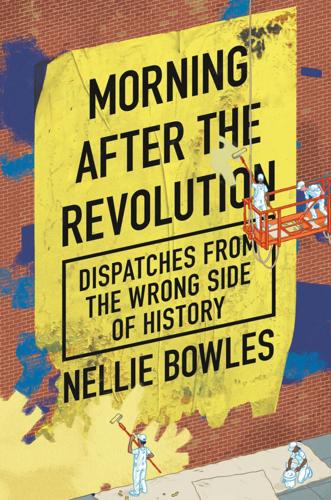
Morning After the Revolution: Dispatches From the Wrong Side of History
by
Nellie Bowles
Published 13 May 2024
If given a choice, who would ever vote to risk their property value going down, or say, “Yes, I’m fine with a shadow over my backyard”? It doesn’t happen. Rage against this pleasant status quo has come from a faction of young renters. I once went to a training session in the Mission District run by a pro-housing group called YIMBY—for “Yes in My Backyard.” I watched a PowerPoint presentation—“And here’s another reason to be mad at your grandparents! Next slide”—and then joined the group for drinks. “The elderly NIMBYs literally hiss at people,” said Steven Buss, who now runs a moderate organizing team called GrowSF, about the tension during community housing meetings.
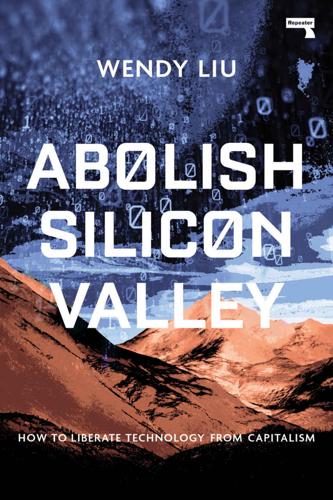
Abolish Silicon Valley: How to Liberate Technology From Capitalism
by
Wendy Liu
Published 22 Mar 2020
Though developers are required to set aside a certain percentage of new units as affordable housing — usually around 20%, waivable by paying a small fee — what counts as “affordable” in San Francisco is a little unreal.19 A family of four that wishes to qualify for the program must be making under the area median income of $118,500, and also must have enough saved to afford the down payment on a several hundred thousand dollar home. And even with those restrictions, there aren’t nearly enough houses to satisfy demand — in 2017, there were 85,000 applications for only 1,210 units. Most of the housing debates here bounce between two poles, NIMBYism (Not In My Backyard) and YIMBYism (Yes In My Backyard). The mainstream assumption is that you’re either a pro-developer YIMBY, or you’re selfish and don’t want any new houses to be built. The pro-developer argument goes something like this: if developers are permitted to build enough new units to meet demand, then supply and demand will equalise, and prices will stabilise; eventually, the housing crisis will fix itself.
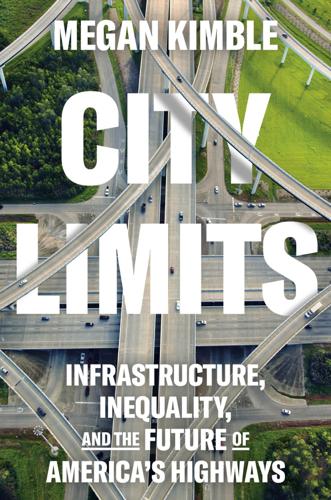
City Limits: Infrastructure, Inequality, and the Future of America's Highways
by
Megan Kimble
Published 2 Apr 2024
Today, TxDOT was asking the city to “rubberstamp” the project without full consideration of its effects. And the future? “If we are going to build a city that’s built on green principles, it cannot be a car dependent future.” In early 2022, DeDe and her husband, Adam Lamont, had cofounded a group called Dallas Neighbors for Housing—a chapter of the national pro-housing group YIMBY Action—to advocate for more dense development across the city. They took up highway removal as their first campaign. The night before the council meeting, DeDe and Adam organized a community event at a restaurant on Ross Avenue, steps from the overpass where thousands of people had gathered to celebrate the opening of Central Expressway seventy years earlier.
…
Constitution, Fifth Amendment, 5 V Vanderbilt, Tom, 14 Vandergriff, Victor, 50–51 van der Hagen, Jordan, 110–11 Vela, Chito, 259 W Walker, Addie, 260 Walker, Heyden Black, 76, 77, 78, 163, 259–60 Walker, Jim, 85 Walker, LaSheryl, 244–45 The Wall Street Journal, 102 Warren, Lovely, 216 Washington (state), 284–85 Washington, D.C. 11th Street Bridge Park, 277–78 North Central Freeway, 19 Watson, Kirk, 74, 257, 260 Wattley, Elizabeth, 122–25, 245, 246 Way, Heather, 219, 220 West, Chad, 249, 251 West Austin, 224–25 West Side Highway (New York City), 53 White Metropolis (Phillips), 56, 58 White Oak Bayou, 238–39 Whitman, Ann, 33 Whitton, Rex, 19–20 Williams, Marc, 268, 270 Williams Brothers Construction, 150 Wilonsky, Harry, 56, 57 Wilonsky, Robert, 50, 57 Wilson, Lakeem, 122, 244–46, 247–48 Wilson, Lockridge, 120–22, 244 Winebar, Rebecca, 154–56, 159–60 Woodall Rodgers Freeway (Dallas), 54 Woodlands, The 68–70 Woods, Eva, 205–6 World Cup games (2026), 264–65 World’s Fair (1939), 22–24 Wright, Frank Lloyd, 24 Y YIMBY Action, 250 Z Zahavi, Yacov, 14 Zoretich, Frank, 206 A B C D E F G H I J K L M N O P Q R S T U V W X Y Z BY MEGAN KIMBLE City Limits: Infrastructure, Inequality, and the Future of America’s Highways Unprocessed: My City-Dwelling Year of Reclaiming Real Food ABOUT THE AUTHOR Megan Kimble is an investigative journalist and the author of Unprocessed.
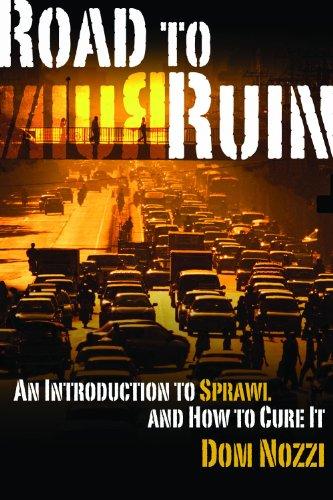
Road to ruin: an introduction to sprawl and how to cure it
by
Dom Nozzi
Published 15 Dec 2003
A 2000 Pew Center survey found that of all local concerns, Americans are most troubled about sprawl and traffic—more than crime, jobs, or education.50 Almost every no-growth movement in the nation is based on a reaction to traffic problems.51 Look at the acronyms we’ve created to refer to groups who oppose growth and development: NIMBY (not in my back yard); NIMTOO (Not in my term of office); CAVE (citizens against virtually everything); BANANA (build absolutely nothing anywhere near anything); NOPE (not on planet earth); NOTE (not over there either). Happily,a new term has emerged for citizens who want affordable housing or higher densities in their neighborhood: YIMBY—yes in my back yard. Such a fearful atmosphere leads to a sort of paralysis, as we no longer trust even informed, conscientious developers, planners, or city officials to deliver on promises that any development project will be good for the community. For example, when a neighborhood sees its property values escalate for various reasons, becoming “gentrified,” all sides generally agree that a change will be beneficial in the short term, yet the fear of eventual unforeseen problems leads many to seize the moral high ground by proclaiming that gentrifying will “chase away poor people” who might no longer be able to afford to live in the neighborhood.

Vanishing New York
by
Jeremiah Moss
Published 19 May 2017
Also in the Daily News, Glynnis MacNicol argued that while the “vanishing of New York is a miserable business,” to advocate for reform is an act of nostalgia for one’s youth. New York is always changing and we need to accept that, “instead of weeping over what it used to be.” In New York, Justin Davidson returned to the topic, hosting a gentrification grudge match between me and Nikolai Fedak, the pro-development blogger of New York YIMBY (Yes In My Backyard). “The only unchanging constant in New York is change,” Fedak told us. “I think the city needs to evolve, and Jeremiah’s nostalgic for the city of the past.” And in her book St. Mark’s Is Dead, Ada Calhoun listed me under the category of “Nostalgics.” From Calhoun’s perspective, the city never dies, it only keeps changing, and complaints about its vanishing are perennial, mere expressions of longing for one’s youth, when the complainers were “at their hottest.”
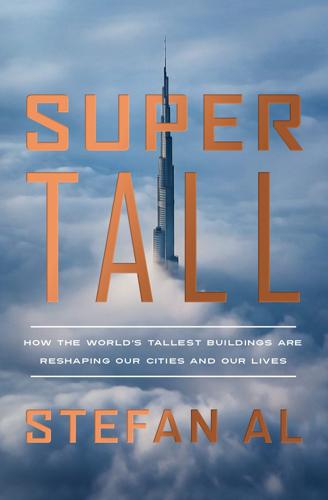
Supertall: How the World's Tallest Buildings Are Reshaping Our Cities and Our Lives
by
Stefan Al
Published 11 Apr 2022
New York Times, March 14, 2019. 37.Oliver Wainwright, “Horror on the Hudson: New York’s $25bn Architectural Fiasco,” The Guardian, April 9, 2019. 38.Azi Paybarah, “They Were Going to Build a Wall at Hudson Yards. Then Came the Backlash,” New York Times, January 15, 2020. 39.Nikolai Fedank, “Viñoly’s Jetsons-Esque Skyscraper at 249 East 62nd Street Revealed, Upper East Side,” New York YIMBY, February 20, 2018, accessed February 27, 2021, https://newyorkyimby.com/. 40.The Municipal Arts Society of New York, The Accidental Skyline, October 2017. 41.David B. Caruso, “One World Trade Center Named Tallest U.S. Building,” Associated Press, November 12, 2013. 42.Stefanos Chen, “The Downside to Life in a Supertall Tower: Leaks, Creaks, Breaks,” New York Times, February 3, 2021. 43.Henry Petroski, “Super-Tall and Super-Slender Structures: Skyscrapers with Smaller Footprints Require Countermeasures to Wind and Sway,” American Scientist 107 (2019): 342–45. 44.Andrew Lawrence, “The Skyscraper Index: Faulty Towers,” Property Report, Dresdner Kleinwort Benson Research (January 15, 1999). 45.Emily Badger, “Density Is Normally Good for Us.

Cities in the Sky: The Quest to Build the World's Tallest Skyscrapers
by
Jason M. Barr
Published 13 May 2024
At the end of the day, the problem is not economic; it’s political and social. Paring building regulations, reducing excessive greenbelts, or evicting tenants to free up land is too controversial. But there are steps that cities can take, though there must be both carrots and sticks, as residents need incentives to switch from NIMBY to YIMBY and feel their neighborhoods will improve as a result. Hong Kong, however, is in a particular pickle because of its unusual institutional background that limits land supply. Much of the non-developable land was converted to parkland in the 1970s. Though most of it is too steep for development, recent attempts to use some of it for housing have met fierce opposition.

The Inner Lives of Markets: How People Shape Them—And They Shape Us
by
Tim Sullivan
Published 6 Jun 2016
“Let Them Eat Pollution,” The Economist, February 8, 1992, 82. 8. “Summers memo,” Wikipedia, www.wikipedia.com/wiki/summers_memo. 9. Lydia Polgreen and Marlise Simons, “Global Sludge Ends in Tragedy for Ivory Coast,” New York Times, October 2, 2006, http://www.nytimes.com/2006/10/02/world/africa/02ivory.html?pagewanted=print&_r=0. 10. William Spain, “Yes, in My Backyard: Tiny Sauget, Illinois Likes Business Misfits,” Wall Street Journal, October 3, 2006, A1. 11. Recent research has highlighted another problem with platform businesses: if consumers discriminate against minority sellers, then the platform will too. The study finds that “non-black [Airbnb] hosts are able to charge approximately 12% more than black hosts, holding location, rental characteristics, and quality constant.”

Road to Nowhere: What Silicon Valley Gets Wrong About the Future of Transportation
by
Paris Marx
Published 4 Jul 2022
Given the strong belief in technological determinism among the powerful people pushing these ideas for the future of mobility, it is no surprise that this was one of the prominent responses, especially since it fit into an existing narrative. In recent years, there has been a lot of discussion about “not in my backyard,” or NIMBY, sentiment in California. These are people who, according to their pro-development, “yes in my backyard” opponents, oppose any changes to their neighborhoods—whether it is the construction of denser housing, the addition of bike lanes, or any other initiative that could alter the area they live in. The criticism of these people is not entirely undeserved, since there is a vocal group that is vehemently against any attempt to change environments designed for single-family homes and automobiles, but that also does not mean that every time a resident opposes a change to their community it is simply for aesthetic reasons or to protect perceived property values.